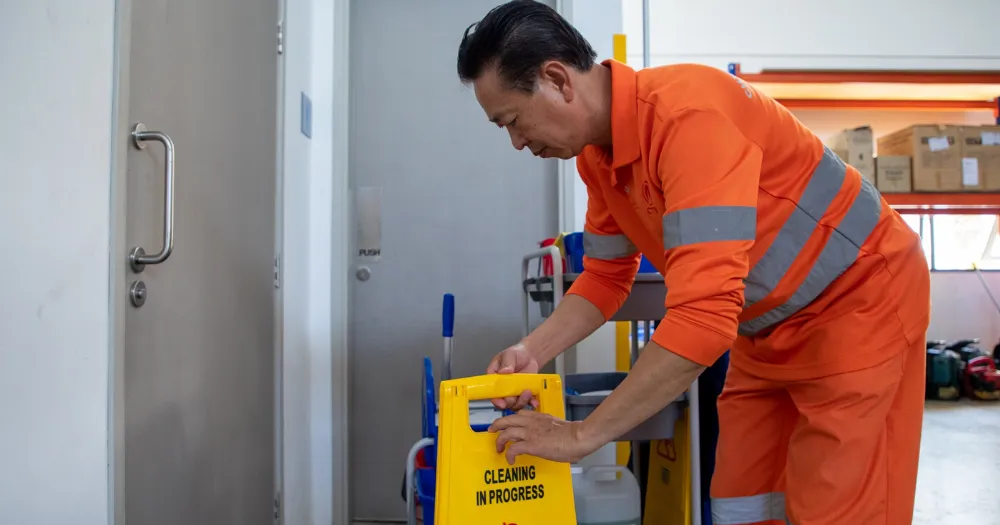最低工资制与渐进式薪金模式有什么区别
网上争论不断,我们来看看渐进式薪金模式与最低工资制的主要区别吧。
|1 min read

<p>上周的大选过后,最引人注目的争论之一就是工人党关于国家最低工资制的提案。</p> <p>这是7月1日举行的2020年新加坡大选中辩论的焦点之一。</p> <p>在辩论中,工人党的林志蔚提出了该党关于最低工资制的提案,以确保工人“有尊严地工作”。</p> <p>人民行动党的维文认可工人党的最低工资制提案,并提出了政府自己的“渐进式薪金模式”作为替代方案。</p> <p>自这场辩论以后,一些网民在网上表达了他们对新加坡实行最低工资制的担忧。</p> <p>林志蔚在自己的Facebook网页上向网民发表讲话,甚至引用学术论文来证明为什么最低工资制可能是缩小新加坡不平等差距的前进方向。</p> <p>但是,国家最低工资制与渐进式薪金模式之间的实际区别是什么呢,</p> <h2>什么是国家最低工资制,</h2> <p>最低工资是指雇主必须向雇员支付的法定最低工资。</p> <p>最低工资制的好处是显而易见的——根据法律,工人们得到的最低实得工资将有所保障。</p> <p>在工人党的宣言中,他们呼吁“所有工作的新加坡人全职工作的最低实得工资为每月1300 新元”。</p> <p>工人党说,这一数额是一个新加坡四口之家对于基本生活必需品如食物、衣服和住所等的平均需求。</p> <p>据该党说,目前新加坡有超过10万人的收入低于这个数字。</p> <h2>最低工资制可能会抬高商品和服务的成本</h2> <p>最低工资政策的批评者提出了两个主要的反对意见。第一个问题是谁将为工资的提高买单。这是林志蔚在Facebook上引用的一篇论文的主题。</p> <p></p><p>如果员工数量保持不变,增涨工资将提高新加坡企业的运营成本。企业通常有两种选择。他们可以自己承担成本或将成本转嫁给客户来抵消这些成本。林志蔚引用的这篇论文发现,企业将两者结合在了一起:工资增长的75 %转嫁给客户,而25 %由企业承担。</p> <p>商品和服务成本增加的可能性已经被大家提了很长一段时间了。</p> <p>林志蔚在其Facebook帖子中表示,他“认为我们能负担得起这点钱来照顾社会中最穷的人。”</p> <p>他的同事工人党成员余振忠在Facebook上也表示了同样的观点,并表达了对最低工资制的担忧。他写道:</p> <p>“如果我们称自己为第一世界国家,我们必须在对待低薪工人的方式上更加公平。”</p> <p>同样,在竞选期间,人民行动党的尚达曼在其党派的一档现场访谈节目中也谈到了成本上升的问题。</p> <p>在那一集中,高级部长尚达曼谈到了最低工资制为何只是渐进式薪金模式的“第一步”,并承认了成本将因此上升。</p> <p>尚达曼说:“作为新加坡人,我们必须支付略高的成本。不过,要想建设一个每个人都一起进步并且更加公平公正的社会,这只是很小的代价。”</p> <h2>最低工资制会导致失业增加吗,</h2> <p>有些人也反对最低工资制,因为他们说这会导致失业增加。</p> <p>人们担心的一个问题是,随着工资的增涨,企业可能负担不起一些员工的工资,因此会解雇他们以降低运营成本。</p> <p>这是真的吗,好吧,这很复杂啊。</p> <p>一个企业是否会受到刺激去替换一个员工,这取决于这个职位有多容易替换。但大量研究这一课题的学术论文表明,最低工资制对失业率的影响可以忽略不计。</p> <p>这个制度是合理的。如果企业能够通过提高收益来充分抵消增加的成本,那么企业就不会有解雇员工的动机。</p> <p>但是,这种影响也取决于行业。</p> <p>在林志蔚引用的一篇论文中,研究者的分析显示制造业和贸易业等较难转嫁成本的行业,失业率略高。</p> <p>另一个警告是,大多数关于最低工资政策的荟萃分析都指出最低工资制对失业的影响很小。最近一份评估了大量研究结果的报告表明,“对于失业的影响是非常小的”,而企业成本的上涨往往会被其他因素所抵消。</p> <h2>什么是渐进式薪金模式,</h2> <p>虽然新加坡政府一直拒绝实行最低工资制,但令人惊讶的是,该政策与渐进式薪金模式非常相似。</p> <p>渐进式薪金模式是政府为提高低薪者工资水平而推出的一种制度。</p> <p>国家职工总会在2012年首次推行渐进式薪金模式,当时的劳工主席是林瑞生。</p> <p>该模式于2015年首次成为清洁行业的强制性标准,它制定了雇主必须支付给员工的最低工资标准。</p> <p>根据2016年发布的清洁业群体三方报告和建议,入门级清洁工在2020年应至少有1236 新元的收入,具体取决于他们所从事的分行业。</p> <p><img src="https://imgur.com/9jQVm0t.png"></p> <p>图片来自清洁业群体三方报告和建议。</p> <p>政府还提供了每个工作阶层最低和最高工资比率的建议。例如,入门级清洁工的建议最低-最高比率为1.2。这意味着“办公室和商业清洁工”分行业的入门级清洁工收入在1236至1483.20 新元之间。</p> <h2>渐进式薪金模式包含最低工资制</h2> <p>如尚达曼之前所述,渐进式薪金模式包含最低工资制。</p> <p>这是如果雇员担任需要额外技能的职位,雇主必须支付的最低工资。这种结构允许员工通过寻找培训机会来赚取更高的工资——也就是说当你在提高技能时会获得更多的收入。</p> <p>这种“阶梯式”是渐进式薪金模式的特征,它超出了最低工资制的标准。</p> <p>渐进式薪金模式也被用作授权和鉴定的工具。不符合这些工资要求的企业将不能获得营业执照。</p> <h2>渐进式薪金模式和最低工资制之间的主要区别</h2> <p>国家最低工资制和渐进式薪金模式之间有一些主要的区别。</p> <p>第一个区别是它们的范围。</p> <p>国家最低工资制要求新加坡所有企业支付给工人的工资高于规定的水平,无论他们是否负担得起。</p> <p>然而,渐进式薪金模式目前仅在三个行业实施和强制执行:清洁、安全和园林改造。政府已经表示,他们打算将渐进式薪金模式扩展到其他行业,但目前尚不清楚何时计划实施。</p> <p>第二个区别是工资的类型。</p> <p>在渐进式薪金模式中规定的数字是基本工资,而在工人党宣言中的最低工资是指实得工资。渐进式薪金模式中列出的基本工资不包含雇员的公积金缴费,这意味着他们实际拿到的工资将比公布的数字少5 %至20 %。</p> <p>但政府经常在谈论渐进式薪金模式时提到就业入息补助计划。</p> <p>就业入息补助金是每月发给35岁及以上、月薪低于2300 新元的新加坡雇员的现金和公积金。</p> <p>根据就业入息补助计划,他们能得到多少钱,</p> <p>每年1700至4000 新元,也就是每月142至333 新元。年长的工人可以从就业入息补助计划中得到更多的钱。</p> <p>这些补助金的60 %进入雇员的公积金,其余的40 %以现金的形式支付。</p> <p><img src="https://imgur.com/jwecosj.png"></p> <p>图片来自Workfare网站</p> <p>那么补助金会是多少,</p> <p>让我们以一位66岁的入门级清洁工为例,其月薪为1236 新元。扣除员工缴纳的公积金,其实得收入将为1174.20 新元。</p> <p>假设他们获得了就业入息补助计划下的最高限额,政府将每月额外给他们133.30 新元。他们的实得收入总共是1307.50 新元。</p> <p>这将与工人党提议的最低工资1300 新元水平相当。</p> <p>请记住,如果这位入门级清洁工更年轻,他得到的就业入息补助金会更少,反过来实得金额也会更少。</p> <h2>关注雇主和雇员,而不是只关注雇员</h2> <p>另一个区别是渐进式薪金模式同时考虑了雇员和雇主。</p> <p>工人的工资会随着他们在培训“阶梯”上的提升而增涨,这让雇主相信生产力也会相应提高。</p> <p>据人力部网站称,“渐进式薪金模式为工人们提供了一条清晰的职业道路,使他们的工资随着培训以及生产力和标准的提高而上涨,从而使工人受益。”</p> <p>该部门在其关于清洁行业渐进式薪金的建议报告中还写道,推进渐进式薪金模式是为了帮助“不同行业的低薪工人实现与他们的技能和生产率水平相符的可持续实际工资增长”。</p> <p>最低工资政策仅以雇员为中心。</p> <p>余振忠在Facebook帖子中写道:</p> <p>“政府可能需要很长时间才能将渐进式薪金模式推广到所有行业,因此制定最低工资标准是一个很好的信号,这表明我们不希望任何一个工人被落下。”</p> <h2>要点是什么,</h2> <p>渐进式薪金模式如此突出的一个原因是它具有时间优势。</p> <p>渐进式薪金模式在2012年首次推出。此后,政府对该系统进行了审查,并获得了如何使受益人受益的定量信息。</p> <p>7月1日,人民行动党在竞选期间的一个现场访谈节目中,人力部部长杨莉明表示,尽管存在一些怀疑,但渐进式薪金模式确实有效,劳工运动已经看到了该模式如何“影响了他们自己的生活”。</p> <p>杨莉明在此谈话中表示,还有一种感觉是“你实际上不想只做最低工资的工作。为什么你可以做更多的事情却只做到最低工资呢,我们真正想做的是,我们想要进步,我们不想只拿最低的工资。”</p> <p>然而,工人党只有学术研究和国外的例子来证明他们对国家最低工资制的观点。这个缺点不容忽视。</p> <p>因此,随着辩论的进行和更多信息的披露,可以提出一些问题。</p> <p>政府打算何时及如何向其他行业推行渐进式薪金模式,</p> <p>10万新加坡人的实得工资低于1300 新元,他们的情况如何,</p> <p>帮助他们提高工资的最有效方法是什么,</p> <p>当地雇主将如何应对最低工资制,他们会喜欢渐进式薪金模式吗,</p> <p>当地雇员,特别是那些将从渐进式薪金模式或最低工资制中获益最多的人,将如何回应这两种选择,</p> <p>《Mothership Explains》是一个让我们深入挖掘世界上重要、有趣、令人困惑的时事并进行详尽阐述的系列连载。</p> <p>这个系列旨在提供深入易懂的解释,使读者不仅可以及时了解世界上正在发生的事情,并且还可以了解事情的原因。</p> <p>上图来自国家环境局的Facebook。</p>

